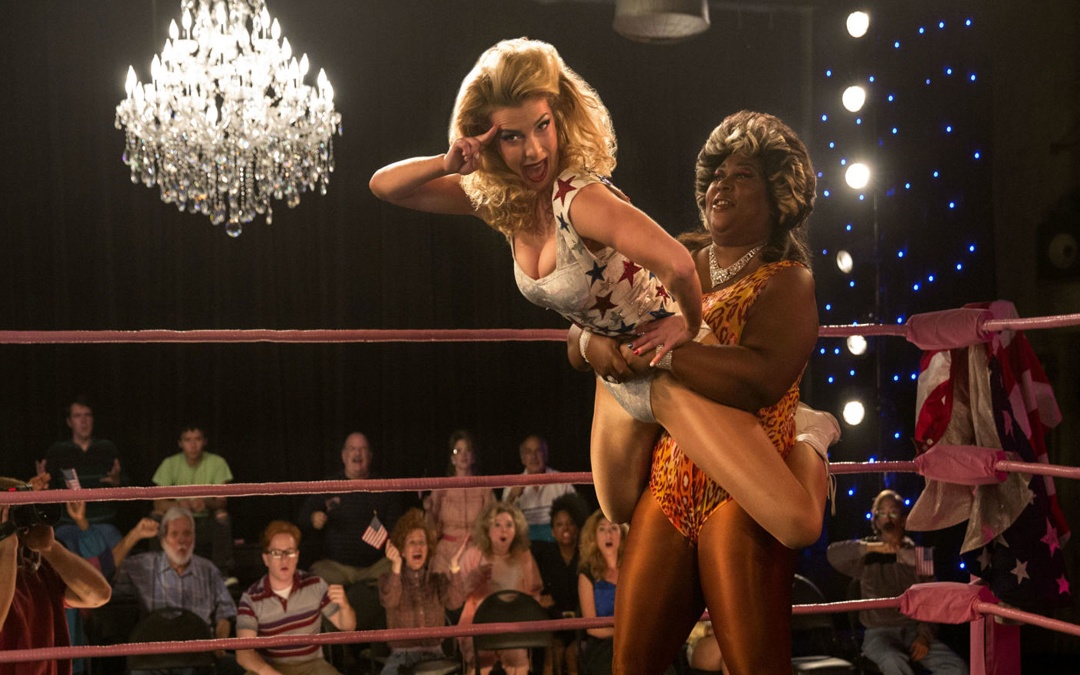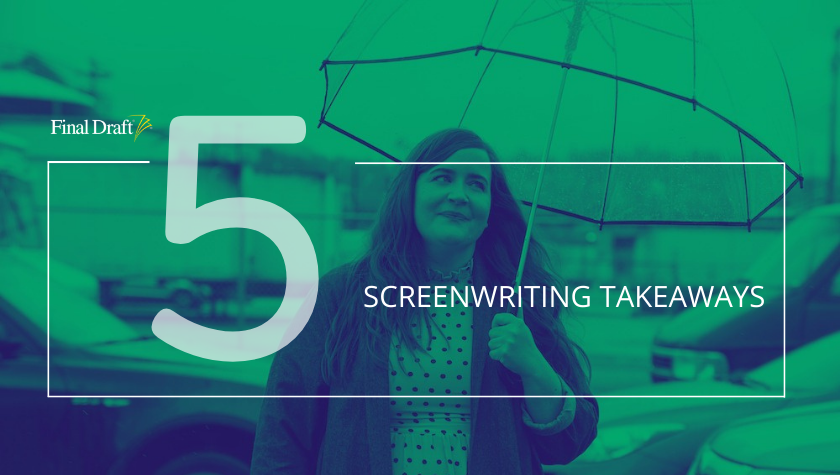All The Write Moves: 'Shrill'
June 17, 2019
Some groundbreaking TV shows lead with their revolutionary agendas, while others, like Hulu’s bittersweet dramedy Shrill, challenge perceptions in quieter ways. Based on Lindy West’s nonfiction book of the same name, and developed by West, Aidy Bryant (who also stars), and Alexandra Rushfield, Shrill explores the emotional landscape of a young woman whose body shape impacts every aspect of her life. Annie (Bryant) is significantly overweight, so well-meaning thin people regularly pester her with suggestions for diet and exercise. More troublingly, nearly everyone she encounters perceives her as a second-class citizen. Annie’s greatest struggle is the formulation of a positive self-image.
Taken for Granted
The pilot episode utilizes a classic maneuver to introduce Annie by demonstrating that she’s stuck in a humiliating rut. While working as a low-level editor at a hip news outlet, Annie endures verbal abuse from her boss, Gabe (John Cameron Mitchell), and lets fear prevent her from pitching ideas for ambitious stories. Especially because we see Annie talking about her workplace angst with co-worker/friend Amadi (Ian Owens), we get the clear sense that she doubts her own value to her employer, and therefore she accepts being taken for granted.
Another element of the pilot episode reveals that Annie has similar problems in her private life. For several months, she’s had a sexual relationship with Ryan (Luka Jones), who comes across as a thoughtless jerk the first time he’s presented onscreen. He summons Annie for a tryst with a one-word text, and after they’ve been together, he asks her to leave his place through the rear entrance because explaining her presence to his roommates is inconvenient. This results in Annie having to walk through an overgrown backyard and climb over a fence, so naturally she falls and ends up covered with dirt and leaves. The image of Annie looking like something that’s been discarded is simultaneously funny and heartbreaking, thereby capturing the overall vibe of Shrill.
The point of introducing Annie this way is to establish that Shrill is a story about self-worth. Initially, Annie allows herself to be used and abused. After a traumatic experience triggers an epiphany, she realizes that the only person holding her back from happiness is herself, so she tries living boldly. Alas, wanting a better life is only part of the long and arduous process of creating said better life. Underlying this mode of character introduction is the importance of empathy to storytelling. It is crucial for writers to anchor characterizations in familiar emotions. That way, even viewers whose lived experiences are different than those of fictional characters, can relate.
Takeaway: Introducing a character at an emotional low activates audience empathy.
Selfish Help
The pilot episode of Shrill is full of uncomfortable moments. One of them involves aggressively upbeat personal trainer Tanya (Katie Wee). When Annie stops into a coffee shop for her daily drink, she notices a flyer on a bulletin board featuring a silly graphic of Tanya kicking a piece of pizza. Annie snaps a picture of the flyer, only to turn and discover that the real Tanya is standing behind her. Assuming that Annie snapped the picture as a means of recording Tanya’s contact info, the trainer launches into a sales pitch about how much help she could provide. She even utters that cruelest of phrases: “You could be so pretty!”
Elsewhere in the pilot, Annie visits her mother, Vera (Julia Sweeney), who overflows with advice—and implied judgement—about weight loss. When Annie resists the guidance, Vera defensively claims that her intentions were selfless. But were they?
Another link in this particular thematic chain is a scene featuring Annie’s boss. Toward the end of the pilot episode, a newly confident Annie pitches a story to Gabe by rudely exclaiming that she has more to offer than a male co-worker. Impressed by Annie’s bluster, Gabe rejects her pitch but allows her to tackle a separate project that’s beyond her usual responsibilities.
In all of these instances, characters offering so-called “help” to Annie reveal secondary agendas. Tanya wants a new client. Gabe wants reporters with swagger, so he doesn’t acknowledge Annie’s potential until he sees personal benefit in nurturing her potential. And then there’s Vera. Parent/child dynamics are often fraught, but in this case, it’s impossible not to detect the presence of disappointment. After all, Vera’s thirtysomething daughter is childless, overweight, unmarried and stuck near the entry level of her chosen profession.
There’s a natural tendency among beginning writers to sort characters into the simplistic categories of good and bad, because the presence of clearly delineated heroes and villains eases the storytelling process. Yet characters who are neither purely good nor purely bad generally lead to more interesting narratives.
Takeaway: Characters who mask taking as giving complicate storytelling.
Carry That Weight
The traumatic event that sparks Annie’s personal growth is an unwanted pregnancy. In one of the pilot’s most surprising moments, Annie discovers that the morning-after pill is not effective for women over a certain weight, and that the pharmacist who sold her the drug failed to provide this information because he is inept. This multilayered situation encapsulates the way that Annie gets marginalized due to her body shape. Someone thought so little of her that he didn’t provide necessarily health information.
There’s a second dimension to the pregnancy subplot. Ryan, Annie’s sorta-boyfriend, prefers unprotected sex, so she indulges him because, as in so many other aspects of her life, she lacks the confidence to speak up for herself. The realization that her meekness has consequences is what compels Annie to change. After terminating the pregnancy, Annie confronts several people.
Then a confrontation that wasn’t meant to be a confrontation provides the pilot’s resonant final scene. Once again, Annie crosses paths with Tanya, the pushy personal trainer. And once again, Tanya tries to shame Annie into diet and exercise. Annie declines the overture as politely as she can, saying that she’s okay with her body image. Tanya concludes the exchange with a derisive remark. That pushes Annie past her limit. She mutters a vulgar comeback just loud enough for Tanya to hear, which emboldens Tanya to say how she really feels: “I was just trying to help you, you fat bitch!”
The final image of the Shrill pilot features Annie walking away from that insult. She’s rattled, but she’s also proud of having stood her ground. She tries to smile, even though her personal demons scream that she’s worthless. This is just about as perfect an image as TV has provided lately, because it crystallizes Annie’s difficult journey. She wants to believe in herself, but negative voices are so omnipresent that they’ve gotten into her head. If careful study of dramatic storytelling teaches us anything, it is that characters who overcome internal obstacles resonate even more strongly than characters who merely overcome external obstacles.
Takeaway: We admire characters who respect themselves.
Written by: Peter Hanson
Peter Hanson is a Los Angeles-based writer, filmmaker and teacher. He directed the screenwriting documentary Tales from the Script, and he teaches at Pepperdine University and UCLA Extension. He provides script consulting at www.GrandRiverFilms.com.- Topics:
- Discussing TV & Film




